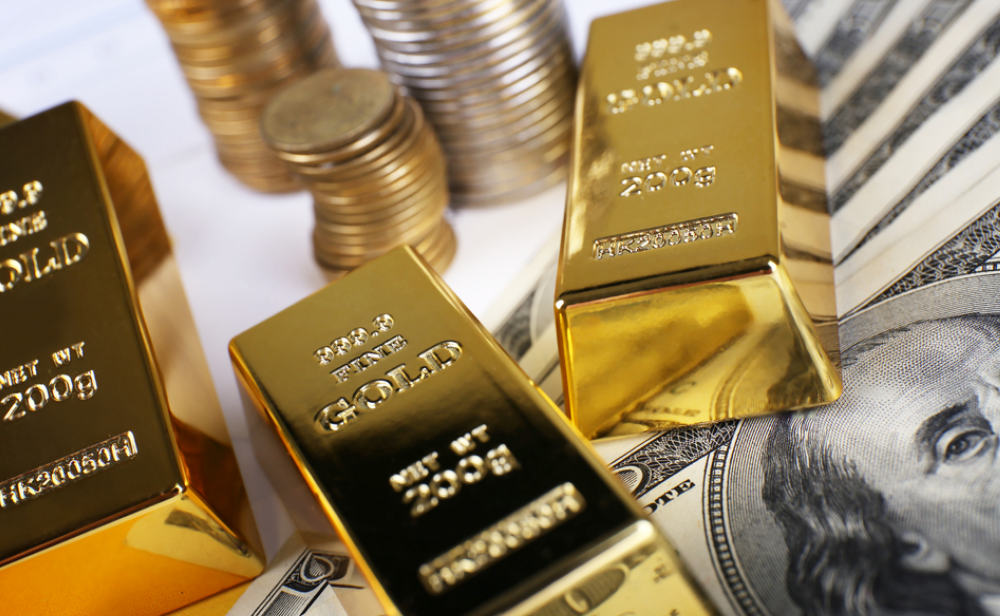
Precious metals are chemical elements that exist naturally and have a high brilliance and melting point. They are less reactive than other elements and are softer and more pliable than other metals. Silver (Ag), gold (Au), platinum (Pt), and palladium are examples of precious metals (Pd). Precious metals are substantially more valuable than base metals due to their rarity. Jewelry, art, coinage, dental procedures, medical gadgets, technology, and investment all employ them.
Gold and silver have always been regarded as precious metals that have been sought. Even today, precious metals have a place in the portfolio of a wise investor.
Those interested in the precious metals markets, like those interested in base metals, have various investing options. Gold has traditionally been seen as a reliable investment, and it is commonly held in the form of jewelry, coins, or gold bars. Gold is becoming more popular as a last resort asset, especially during economic turmoil. Investors can trade stocks, mutual funds, futures, options, and ETFs based on precious metal holdings and actual possession.
There are several ways to purchase and invest in precious metals, such as gold, silver, and platinum, and numerous compelling reasons to join the treasure hunt. If you’re new to precious metals, keep reading to learn more about how they function and how you might invest in them.
Reasons to Invest in Precious Metals
One reason to invest in precious metals is to hold an asset not liable to anybody else. This goal is frequently achieved via investing in actual precious metals (coins and bars), digital gold, and physically backed exchange-traded securities.
The distinction between allocated and unallocated precious metals has several ramifications. Allocated precious metals provide the highest level of investor protection. They are unencumbered, separated, and give the bearer ownership title. Third parties cannot borrow, or lease allocated precious metals. On the other hand, unallocated precious metals increase counterparty risk because the holder’s ownership title is not safeguarded. If the underlying metal is unallocated, gold investment vehicles may grant investor claims that exceed the entire quantity of the underlying metal under certain circumstances. Investors may become unsecured creditors if the issuer becomes insolvent or bankrupt.
Gold: A Precious Metal to Invest In
Gold has been an unrivaled repository of value throughout history. Gold is a monetary metal as well as a kind of alternative money. There is no counterparty risk. In geopolitical turmoil or economic decline, gold has often functioned as a safe-haven asset. Central banks keep around one-sixth of the total investable gold stock to diversify foreign currency reserves. Historically, gold has served as an excellent portfolio diversifier.
A rise in the urge to hoard the gleaming yellow metal can be attributed to several factors:
Systemic financial concerns vary, and when banks and money are thought to be unstable and political stability, gold is frequently sought as a safe haven.
Inflation makes it a necessity to invest in precious metals. When actual rates of return in the stock, bond, and real estate markets are negative, consumers frequently flock to gold as a safe-haven asset.
War and political turmoil have always prompted people to stockpile and invest in precious metals, especially gold. A lifetime’s worth of savings may be made portable and preserved until it’s time to exchange it for food, housing, or safe transit to a less perilous location.
Silver
Silver is a hybrid metal with extraordinary physical qualities that make it valuable in technology and as a medium of exchange. Silver’s characteristics make it suitable for a wide range of applications. Approximately half of the yearly silver supply is used in industry. Silver is more cheap than gold and is known as the “common person’s” precious metal. Silver, like gold, may diversify a portfolio, although its price is more variable.
Investment in this precious metal is popular in photography. The emergence of the digital camera has superseded silver’s previously dominating position in the photography industry—silver-based photographic film.
The growth of a large middle class in the East’s developing market nations fueled a surge in demand for silver-based electrical gadgets, medical devices, and other industrial equipment. Silver’s qualities make it a desirable commodity for everything from bearings to electrical connections.
Silver’s use in batteries, superconductors, and microcircuits makes it important to invest in precious metals.
Lesser-Known Precious Metals and Investment in These Precious Metals
The valuable metals platinum and palladium are less well-known. But still, the investment in these precious metals is worth it. They both have extraordinary qualities that might make them extremely valuable. The autocatalyst industry, as well as jewelry, boosts demand for platinum and palladium. They are more valuable than gold and silver because they are manufactured in only a few countries worldwide, making their supply more vulnerable to fluctuations.
Platinum:
Like gold and silver, Platinum is traded on global commodities markets around the clock. Because it is significantly rarer than gold, it frequently commands a greater price (per troy ounce) during the normal market and political stability periods. Annually, far less metal is extracted from the earth.
Platinum, like silver, is classified as an industrial metal. Automotive catalysts, intended to minimize the harmfulness of pollutants, have the highest demand for platinum. Following that, the majority of the demand is for jewelry. Catalysts for petroleum and chemical refining, as well as the computer sector, consume the remainder.
Investment in the precious metal platinum is also worth it. Platinum prices are mostly affected by vehicle sales and production statistics due to the auto industry’s considerable reliance on metal. Legislation requiring automobiles to install more catalytic converters might increase demand. In 2009, however, American, and Japanese automakers began to use recycled auto catalysts or more of palladium, platinum’s reliable—and typically less expensive—sister group metal.
Only two nations have significant platinum mines: South Africa and Russia.
This opens the door to cartel-like behavior that would artificially sustain or boost platinum prices.
According to investors, all of these variables combine to make platinum the most volatile investment in precious metals.
